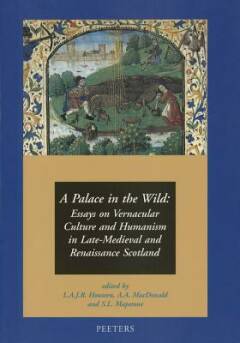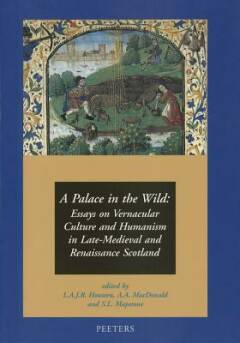
- Afhalen na 1 uur in een winkel met voorraad
- Gratis thuislevering in België vanaf € 30
- Ruim aanbod met 7 miljoen producten
- Afhalen na 1 uur in een winkel met voorraad
- Gratis thuislevering in België vanaf € 30
- Ruim aanbod met 7 miljoen producten
Zoeken
€ 50,00
+ 100 punten
Omschrijving
The essays in this collection share an overall purpose: they aim to shed new light on Scottish culture during the century and a half (1475-1625) which saw the full emergence of Scotland as a player on the European political and cultural stages. Throughout the book, awareness of the larger European background is considered an essential element in the proper appraisal of the productions of Scottish culture. Topics discussed include: the Scottish reception of, and participation in, general humanist learning; the impact of Burgundian patterns of late-medieval piety; international diplomacy; courtly culture under Kings James III, IV, V and VI, and Mary Stuart; poetry and politics; law; libraries; and historiography. The contributions in this volume offer innovative contextualisations and interpretations of many canonical works of Scottish culture; at the same time they also seek to expand that canon by examining several less familiar artistic productions. All those interested in the cultural changes inherent in the transition from the late-medieval to the early modern periods, and in the Northern manifestations of the European Renaissance, will find much of interest in this book. In the words of R.L. Stevenson, the cultural achievement of Scotland during this period may be described as constituting a metaphoric "palace in the wild".
Specificaties
Betrokkenen
- Auteur(s):
- Uitgeverij:
Inhoud
- Aantal bladzijden:
- 281
- Taal:
- Engels
- Reeks:
- Reeksnummer:
- nr. 1
Eigenschappen
- Productcode (EAN):
- 9789042908994
- Verschijningsdatum:
- 25/10/2000
- Uitvoering:
- Paperback
- Formaat:
- Trade paperback (VS)
- Afmetingen:
- 170 mm x 239 mm
- Gewicht:
- 703 g

Alleen bij Standaard Boekhandel
+ 100 punten op je klantenkaart van Standaard Boekhandel
Beoordelingen
We publiceren alleen reviews die voldoen aan de voorwaarden voor reviews. Bekijk onze voorwaarden voor reviews.











